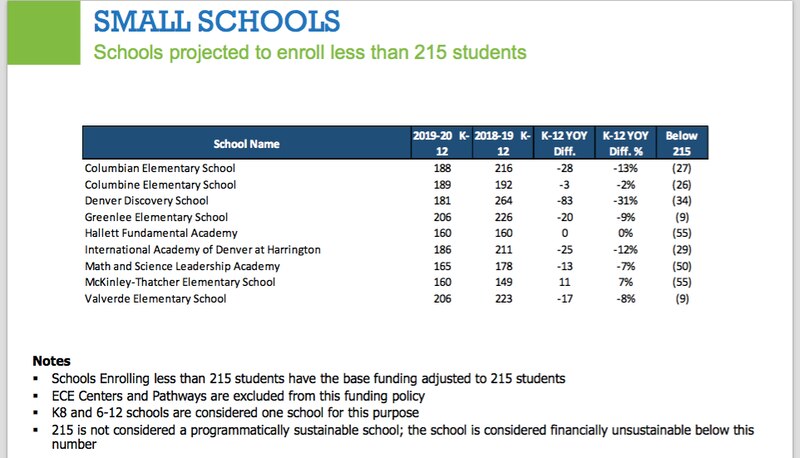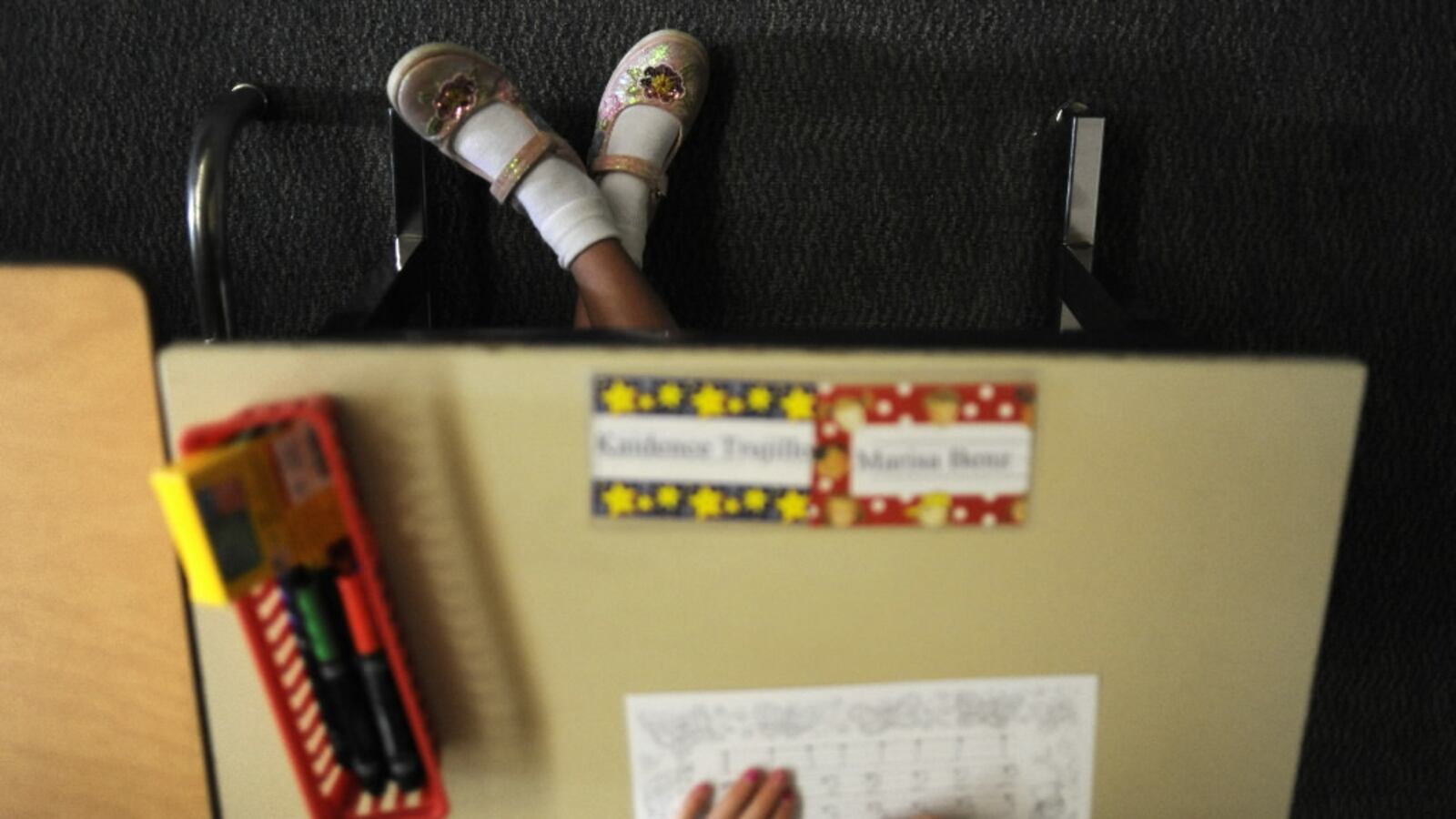As Denver families are pushed out by high housing costs, declining enrollment is emerging as a notable budget issue for the school district, signaling that hard conversations about school consolidations could be coming.
A recent presentation to the Denver school board highlighted the challenges. One of the biggest? The predicted rise in the number of small schools. That’s a financial problem because Denver schools are funded per pupil. The fewer students a school has, the less money it has to pay for the teachers, supplies, and programming that make schools attractive in a competitive environment where families can request to attend any school in the district.
Denver Public Schools helps small schools by funding any school with fewer than 215 students as if it had that many students. That ensures schools can afford what Denver Public Schools Chief Financial Officer Erik Johnson called “the bare-bones minimum,” including one teacher per grade, one principal, one secretary, and student mental health support.
This year, there are eight schools with fewer than 215 students, which is costing the district $1.05 million in subsidies. Next year, the district is predicting there will be nine.
But by 2022, the district predicts there could be as many as 19 schools with fewer than 215 students, which would cost the district $3.4 million in subsidies. That’s less than 1 percent of the district’s $1 billion budget — but in a state where per-pupil spending on education lags well behind the national average, district officials argued that every dollar counts.
“As we look at the next three years, we’re looking at tripling that subsidy and more than doubling the number of schools that fall within that category,” Johnson told the school board at a recent meeting.
Superintendent Susana Cordova quickly interjected. “If we do nothing,” she said.
“Right,” Johnson said. “If we do nothing.”
But it doesn’t seem as though the district will do nothing. The school board, which sets policy for the district, plans to convene a subcommittee to address declining enrollment and small schools. While the scope and membership are still being decided, board members from two of the most impacted regions — Lisa Flores, who represents northwest Denver, and Angela Cobián, who represents southwest Denver — said they plan to participate.
“Our inaction on addressing small-school enrollment means we continue to put dollars toward phantom kids as opposed to actual, real kids,” Flores said, referring to the practice of funding schools with only, say, 180 students as if they had 215 students.
A previous blue-ribbon district committee on school integration also tackled this issue. Its members recommended in December 2017 that the district create a “transparent school consolidation process that allows impacted communities to reimagine their schools.” The committee suggested the district look at schools with fewer than 300 students.
The district has yet to create such a process. School closure and consolidation are controversial endeavors that spark a lot of pushback from students, families, and educators. But the blue-ribbon committee’s recommendations could end up as part of a new “unified equity plan” that Cordova, who became superintendent in January, has said will be completed this year.
Here are some slides from a presentation to the school board that show why the district is concerned about having more small schools. The slides are from a presentation about the proposed 2019-20 Denver Public Schools budget, which the school board will consider for approval next month. Together, they paint a picture of a Denver school district that has fewer students overall and fewer students living in poverty, as well as significant geographic shifts.
This slide includes a look back at how the number of Denver Public Schools students living in different parts of the city changed from 2013 to 2018. Red signifies declines, while green signifies growth. The biggest declines were in the western part of the city.
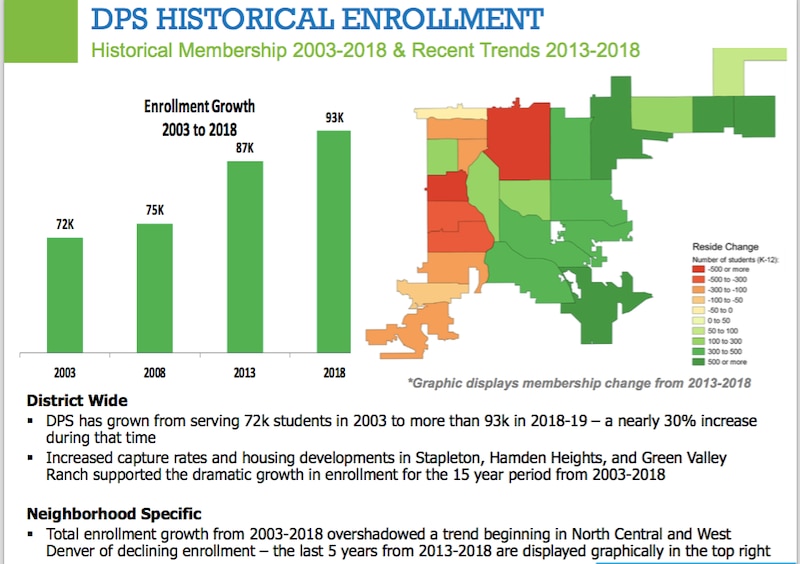
This slide is a look forward at projected enrollment in different parts of the city. Pink signifies declines, while blue signifies growth. Big declines are predicted in the western part of the city, as well as some northern parts of the city.
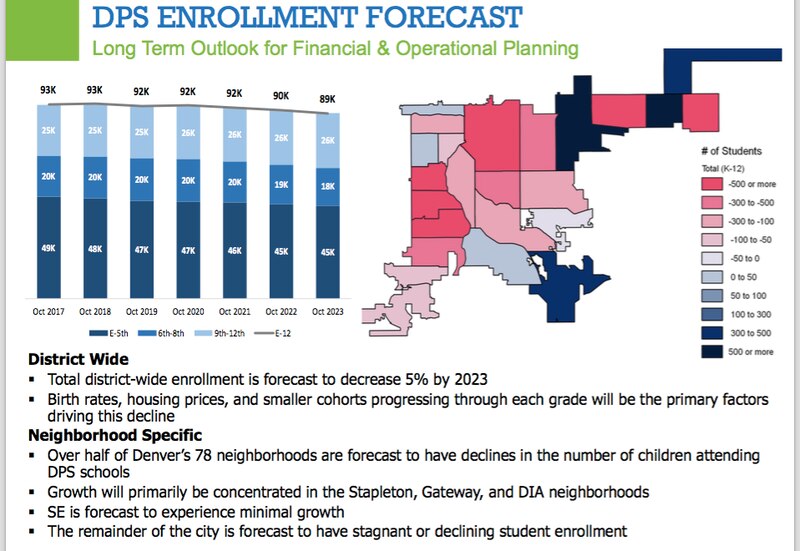
This slide shows how the number of students in kindergarten through 12th grade is predicted to change from 2019-20 to 2024-25. (It does not include preschool students.) The slide also shows a decline in the percentage of students from low-income families who qualify for free or reduced-price lunch, from 62 percent to 56 percent.
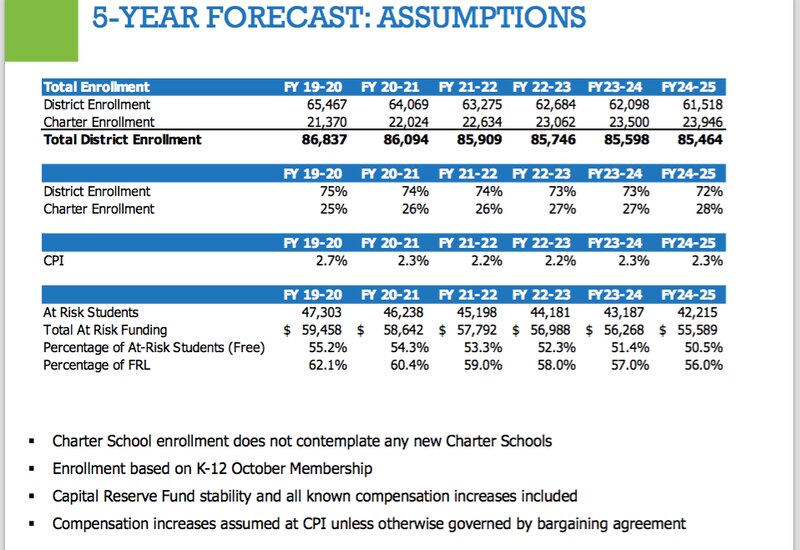
This slide shows the potential increase in the number of schools with fewer than 215 students and the increase in the cost of subsidizing those schools.
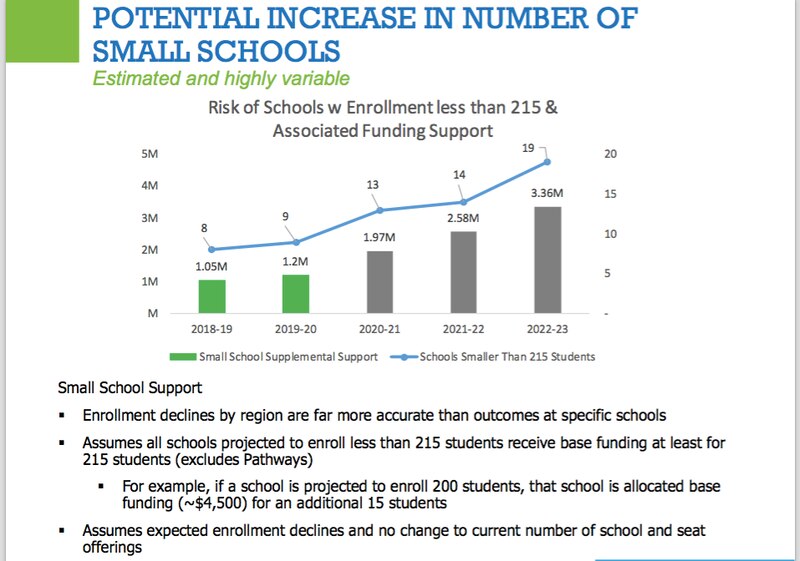
And this slide shows the nine schools the district is predicting will have fewer than 215 students next year and thus will receive a district subsidy.
